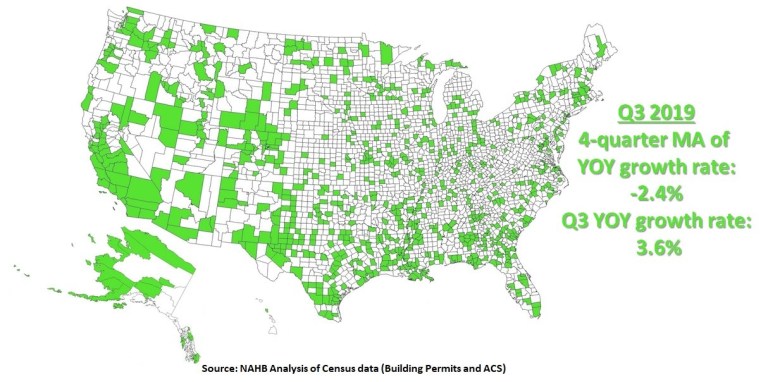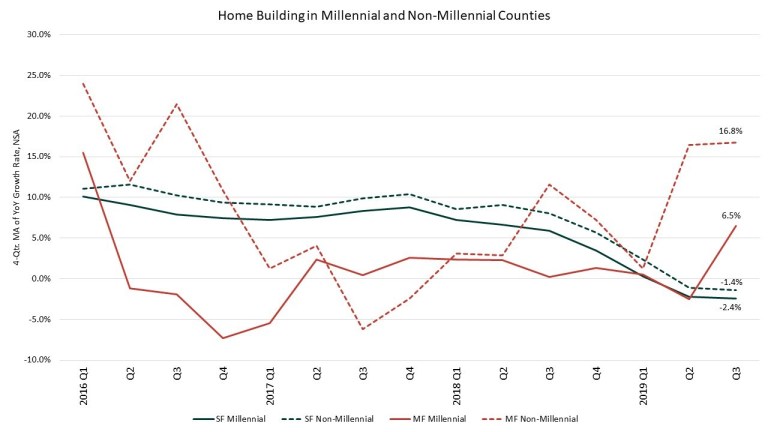Dec 4 2019, 10:15AM By Jann Swanson
There is widespread industry concern that new homes and apartment buildings are not being constructed fast enough to keep up with demand and now the National Association of Home Builders (NAHB) says there is a mismatch between where they are being built and where they are truly needed. Litic Mulali analyzed the third quarter edition of NAHB’s Home Building Geography Index (HBGI) for a post in the association’s Eye on Housing blog.
The HBGI identified “Millennial counties,” those counties in which Millennials, persons born between 1981 and 1997, make up at least a 26 percent share of the local population. The top 25 percent of counties with a high millennial concentration also contain 62 percent of the total U.S. population. In a third quarter analysis of HBGI, NAHB found that those counties accounted for 59 percent of single-family and 80 percent of multi-family construction.
Those numbers, especially for multifamily construction, seem appropriate given the population numbers, but NAHB found that the growth rate for construction numbers is generally lower than in the remaining 75 percent of U.S. counties. When the analysis focuses on Millennials, the HBGI data shows that just under 60 million Millennials live in that top 25 percent of “Millennial counties.” In other words, 67 percent of all of the Millennial generation, the generation that will represent a critical source of emerging housing demand over the next decade live in the very counties where building growth has lagged. While 2016 saw brief double-digit, year-over-year growth rates for single- and multifamily permits, these rates have slowed in recent quarters. This indicates there could be a growing geographic mismatch between younger households with expanding housing demand and where construction is expanding.
As shown on the map, the four-quarter moving average of year-over-year single-family construction growth rates was negative for Millennial areas in the third quarter (-2.4%). This was similar to the negative trend in apartment construction that was observed in large metro core counties where many young urban professionals reside.

The graph below shows that growth in the rate of single-family home construction has generally been generally lower in Millennial-intensive counties compared to the rest of the nation – the opposite of what future housing demand requires. At the same time, multifamily construction has been relatively flat in those counties since 2017 but did pick up in the most recent quarter.

Murali concludes that the new HBGI data indicate that new home construction is concentrated in the top counties for Millennial population, “But the growth rates for these areas have been lagging the rest of the nation in recent quarters, suggesting a possible spatial mismatch between housing demand and housing supply, which further exacerbates the ongoing housing affordability crisis particularly for younger households.”
4,666 total views, 2 views today